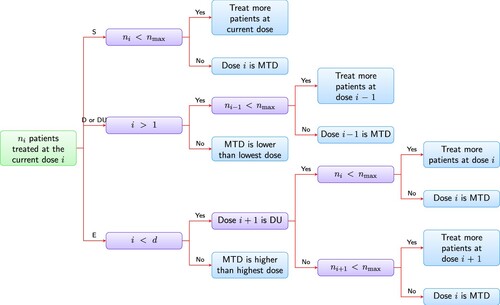Figures & data
Table 1. A decision table for a ‘3+3+3’ design (target toxicity is 0.3).
Table 2. Rejection regions and decision rules.
Figure 1. Schema of dose-finding using decision table. is the cumulative number of subjects treated at dose level i;
is the maximum number of subjects allowed at any dose level; d is the total number of dose levels. ‘treat more patients’ means additional cohort of patients should be treated to evaluate DLT. After that, it should go back to Step 1.


